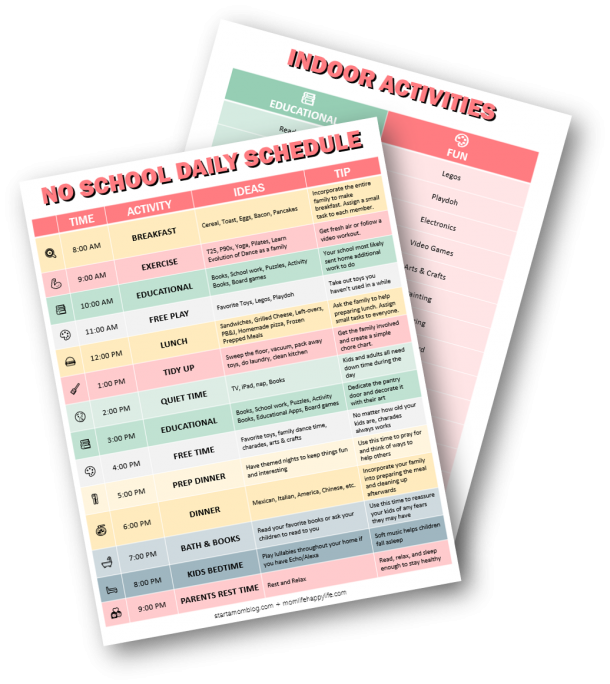Inside: Want real tips on how to get your picky eater to eat healthy whole foods? Here are 11 ideas to help you get through the picky eating phase.
Do you have a picky eater that just about has you pulling your hair out at mealtimes? Do you find yourself in a battle with your children at the dinner table?
I hear you. I’m a mom of two children who as toddlers had very “refined tastes”. I know all about picky eating troubles and dinnertime meltdowns. Believe me when I say I’ve been there. There was a time when my son’s diet was reduced to granola bars and honey on toast.
I knew this had to change.
But I just didn’t know where to start.
Understanding why children become picky over food was the first step.
Why do children become picky eaters?
Picky eating is a common behavior in children of all ages, but especially toddlers and preschoolers. Children may start to refuse food based on color, taste, or texture or become fussy about food because they notice that their siblings or parents are picky too. Sometimes, fussiness over food is unintentionally reinforced by bribing or rewarding a child’s eating behaviors.
The good news is that with the right approach, the picky eating phase will pass. The most valuable thing I learned was that rather than getting frustrated by (or loose hair over) my kids’ picky eating, the best thing to do was to let them be ‘picky’ – but only over healthy food choices.
It was tough in the beginning. Did we see tears and protests? Absolutely. But it didn’t last long. And I knew that as long as I stayed consistent, in time my kids’ eating behaviors would improve.
Today, my children (now school-aged) enjoy a wide variety of fresh whole foods, they are happier, and family mealtimes together are mostly a joy.
So, there’s definitely hope for you too.
Here are some ideas that helped everyone in my household get through the picky eating phase.

How To Handle Picky Eating: 11 Practical Ideas to Try
Avoid Being The Short Order Cook
Understand that your child may not want to eat everything you prepare. If your child eats very little or even refuses to eat anything at all, avoid the temptation to return to the kitchen to whip up something else (or let them have the granola bar) for dinner.
This was a tough one of me. But once I accepted that it’s my responsibility to decide what food is provided, a lot of things changed. The only thing your child should decide is whether or not they eat. Encourage your child to ‘taste’ the food but respect their choice to eat (or not). Just make it clear that there are no alternatives when the meal is refused.
Some children may be so resistant that they refuse to even join the family at the dinner table or worse, turn family mealtimes into a battlefield. In this case, calmly explain to your child that if they want to eat, they must sit down at the table. Let them know that once the food is cleared, they’ll be no more until the next mealtime.
Will your child go to bed hungry? Probably. But don’t stress! They’ll make up the nutrition later on. It may take a few days for your child to adapt, but be consistent and eventually, they’ll come around.
Do Consider Natural Preferences
Consider the foods your child naturally enjoys and try to introduce new foods that are close to the foods they already like. Over time you can build up to more challenging foods and experiment with different flavors.
It’s normal for children to have preferences or quirks about food. I have one child that likes sea salt on broccoli stems, and the other who dislikes any added salt on anything and only eats the broccoli tree! Despite individual quirks, I believe that you can make simple adjustments to a single-family meal that everyone can enjoy.
Stock your pantry, fridge, and freezer with a variety of healthy food
Stay in control of the shopping cart! If all your child has to choose from is healthy, then that’s what they’ll eat. I know that I can’t (and don’t want) to isolate my children from the world around them. We enjoy going on Easter egg hunts, collecting candy at Halloween, and eating birthday cake at parties. But at home, where they eat most of the time, I make sure to offer a variety of fresh whole foods and do my best to minimize processed food and added sugar. And while I do appreciate the time-saving advantages of ready-made food, I balance this out by spending a little time here and there preparing healthier versions of store-bought items. Some of our favorites include these gluten-free chocolate chip cookies made without refined sugar or flour. For other healthier snacks ideas, you can make at home, read 14 Paleo Snacks That You Can Make At Home Today.
Mix up your meal plan
Add a variety of dishes to your weekly meal plans so that your child is less likely to turn the dinner table into a battlefield because the meal wasn’t what they expected.
For infants, introducing a variety of food, especially vegetables early may reduce the likelihood or even prevent picky eating. Puree, mash or lightly steam fresh food so your little one can experience different tastes and textures.
Give Them Choices
Sometimes, picky eating can be in response to overly controlling parents. Offering age-appropriate choices helps to avoid power struggles with your child. And research tells us that children who have more control over food decisions tend to like more healthy foods.
I keep choices simple, such as letting my children pick what they’d like from the salad or choose a healthy snack we can bake together. Even small choices will help your child feel more in control and lessen tantrums or meltdowns over food.
Set A Schedule
Children do need to eat frequently. However, if they’re grazing all day they are much less likely to eat what is dished out at mealtimes.
Set a meal schedule that works for your family. Children thrive and are happiest when they know what’s coming next. Consistent meal times broken up by a morning and afternoon snack means they will likely be hungry when you need them to be.
Be realistic about how much they should eat
A child’s energy needs to change based on age and activity level. You can use this chart as a guide, but ultimately trust your own judgment and let your child’s hunger cues govern how much they should eat.
Involve them in meal preparation
Let your child help with simple meal preparation tasks. For toddlers and preschoolers, it can be as simple as putting together chopped salad ingredients. Take advantage of kid-friendly knives and have older children do the chopping too. Other tasks suitable for young children include stirring, counting ingredients, evening hand washing pots, and utensils, to name a few.
Make the process fun, tell them interesting facts about different foods, and ask them brain growing questions like “How do you think all these vegetables made it to the grocery store?”. Or go one step further and start a small garden at home. Your kids will enjoy just being with you and the extra help is a bonus for you.
Read More on Gardening With Kids: How To Get Kids In The Garden & Off Screens
Try to avoid bribes or rewards
Resist the temptation to offer your child dessert in exchange for eating healthy foods. When you do this, it makes the food you want them to eat seem even less appealing. “If you eat this (bad) broccoli and you can have this (good) cookie”. See the confusion? It’s okay to offer dessert. But try not to make dessert the reward for eating dinner.
We want our children to make healthy food choices because you have taught them that good food makes them strong and healthy, not because there’s something else in it for them.
In fact, for the same reasons, it’s best not to use treats as a reward for any behavior, like being good at the grocery store or cleaning up toys. By encouraging your child to be self-motivated, you help them develop the skills they need to make good decisions about food or otherwise even when you’re not there.
Make mealtimes enjoyable
Create pleasant family rituals around mealtimes. My children love taking turns with prayer before dinnertime, and their enthusiastic “Hay-mens!” set a positive tone for our time together around the table.
You can also play games to help alleviate any anxiety over new food. Try asking them to pick out food for each color of the rainbow or traffic light colors to help make mealtimes fun. Feel like getting super creative? Change the scene and have your child set up a tea party or picnic for a family meal.
Limit or remove distractions like the television, tablets, and phones (yours included) so that you can focus on enjoying quality time together.
When you share a meal as a family, it becomes more about the time spent together and less about the food on the table.
Model Healthy Eating Habits
Show your child what healthy eating means by trying a variety of healthy whole foods together. Talk about food using positive language, for example, “These veggies will give you lots of energy to run on the soccer field”.
Keep Trying
Eating food should be an enjoyable experience. But often it takes several tries before a child decides that they like a new food. And just when you’ve found something they like, don’t be alarmed if tomorrow the only ‘child’ who still likes it is the family dog! It’s normal for children to feel differently about a particular food from one day to another. So don’t scratch it from the menu just yet. Continue to offer new foods and every so often reintroduce the ones they didn’t like before.
Final Thoughts…
Overcoming picky eating takes time and consistent effort. Try to stay positive, offer healthy food choices, and have patience.
And above all, know that the healthy eating patterns you establish while your children are young will be lessons that they carry for a lifetime.
Share your challenges and successes with your picky eaters in the comments below. For more healthy family meal ideas & parenting tips, visit me at poppyandperch.com.




